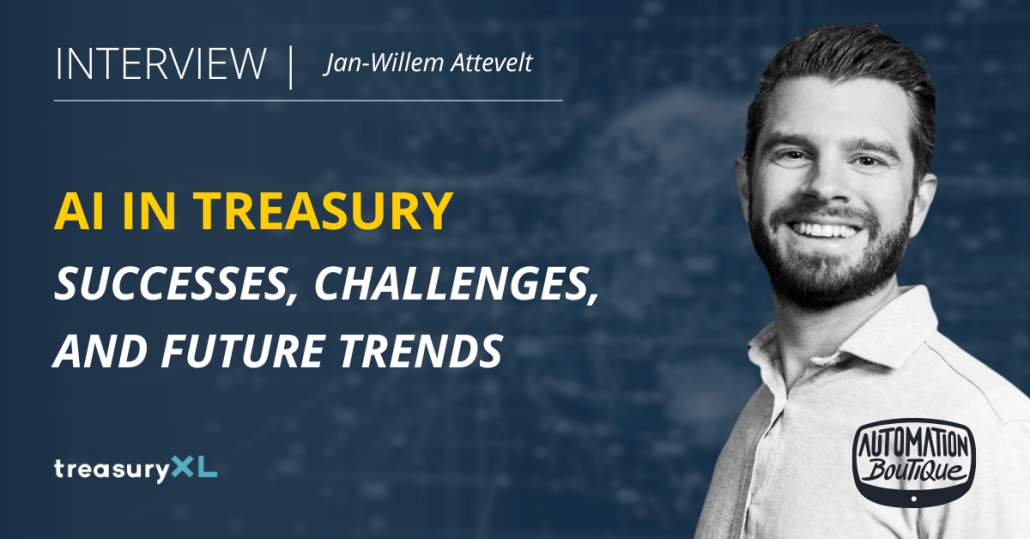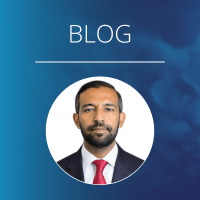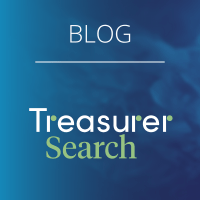We asked Jan-Willem to explore AI’s role in treasury, focusing on its practical applications and how it can enhance treasury processes.
What successes have you seen with AI in Treasury?
Since ChatGPT, which is a type of Generative AI, came out in 2022, many businesses have been exploring how to use this new technology in their operations—including treasury tasks. Generative AI is pre-trained on vast amounts of data and can create new content such as text, images or even code. It generates outputs based on patterns it has learned but doesn’t necessarily understand the specific context or details of treasury management.
While there’s a lot of excitement around generative AI, I haven’t seen many practical applications for it in treasury yet.
On the other hand, traditional AI has been around for much longer and has already found its place in treasury operations. This type of AI is designed for specific tasks and is trained on specialized datasets. It excels at pattern recognition, data analysis and automating routine processes within a defined scope.
There have been notable successes with this type of AI in corporate treasury:
Cash flow forecasting
AI has proven to be very useful for some companies in predicting cash flow. For example, I have come across success stories from several companies. Pearson, an educational company, has used AI models to dig deep into their cash flow forecasts. They compare their predicted numbers with the actual results to find out why there were differences. By feeding this information back into the AI model, it learns and gets better over time. This helps treasury teams plan cash more accurately without having to adjust things manually.
Similarly, Ingka Group (IKEA) has successfully used custom-built AI for better cash flow forecasting. This is encouraging because it shows that companies can develop their own AI solutions tailored to their specific needs. Traditional AI models, trained on the company’s data, can recognize patterns and make predictions that are highly relevant to their specific operations.
Fraud Detection
AI has also been helpful for some companies in detecting fraud. It can analyze large amounts of transaction data to find unusual patterns that might indicate fraudulent activity. Companies like KPMG have used AI to flag suspicious payment patterns that would be hard for people to spot on their own. This improves security without adding extra work for treasury teams.
Automating receivables management
AI can also help in automating processes like receivables management, which helps with working capital.
In one case study, a company dealing with thousands of monthly checks was struggling with manual processing delays and low team morale. They implemented an AI solution that automated the matching of payments to invoices, even when customers paid in complex ways. This led to faster payment processing—most payments were handled within two days—improved cash flow, and allowed the team to focus on more valuable tasks. As a result, the company enhanced its working capital by getting cash into the business more quickly.
How is Automation Boutique using AI in Treasury?
At Automation Boutique, we’ve been experimenting with AI to see how far we can push process automation in treasury. We’ve focused on two main areas: using AI to analyze treasury processes and integrating AI into robotic process automation (RPA).
AI-Driven process analysis
We developed a prototype that uses AI to look at a company’s treasury processes and identify areas that could be improved. The idea was to provide actionable insights by examining workflow data. While this was an interesting concept, the results were mixed and not consistent enough. The AI tool highlighted some areas for optimization, but its suggestions weren’t always practical or accurate enough for rolling out the tool on a large scale. We found that understanding the context and specific details of a business still requires human judgment.
Integrating AI into RPA solutions
The second area, which has shown more promise, involves integrating AI into Robotic Process Automation (RPA) solutions. Traditional RPA is limited because it follows predefined rules; if something unexpected happens, the robot doesn’t know how to handle it. With AI, RPA can overcome these limitations and allow for more automation of treasury processes.
For example, early in my career, I had to extract details from various bank guarantees, which were documents with inconsistent structures and formats. This process was very time-consuming and error-prone. Now, AI allows robots to process this unstructured data, recognizing key terms and values even when they’re presented differently across different documents. This advancement makes it possible to automate tasks that were too complex for standard RPA solutions, expanding what we can automate in treasury.
What challenges have you seen with AI adoption in Treasury?
Even though there are some promising uses for AI, we’ve encountered several challenges that limit its broader adoption in treasury.
Data availability
One of the biggest challenges is having enough good-quality data. Traditional AI models need large amounts of relevant data to learn effectively. Big companies can collect vast datasets and invest in data engineering, but smaller companies might struggle to gather the data needed to train strong AI models. Even when companies have the right data, organizing and cleaning it for AI isn’t easy. It’s often tough to format the data in ways that AI models can understand.
Limitations of Generative AI
Generative AI also has its limitations. Current models aren’t great at complex reasoning (although this will change in the upcoming years). Many AI tools can spot patterns, but they aren’t yet able to understand the deeper strategic context in which treasury decisions are made. This is a crucial gap because treasury management often involves navigating complex trade-offs and future uncertainties that require more than just recognizing patterns.
Reliability issues
Another risk is the problem of AI “hallucinations”—this is when an AI model generates information that seems plausible but is actually false. Treasury teams need to trust the AI’s outputs, which means the models must become more transparent about where they get their information and how they reason. Without this transparency, the risk of misleading information could outweigh the potential benefits.
Inconsistency of AI outputs
The unpredictable nature of AI adds another layer of complexity. Because AI outcomes can vary even with the same inputs, the technology doesn’t yet offer the kind of consistency needed for sensitive financial processes. This unpredictability makes regulatory compliance and audits more complicated.
Resource constraints
Finally, resource constraints pose a practical challenge. Treasury departments are often focused on day-to-day operations, leaving little time for exploring projects that involve AI. For AI adoption to accelerate in corporate treasury, companies need to make room for experimentation while balancing their ongoing responsibilities.
What promising AI trends do you see for the future of treasury?
Looking ahead, I want to highlight two important developments that I think will become very relevant for treasury.
-
Integration with existing systems
One big change is that AI tools will become more and more available in software and systems that treasury teams already use.
For example, tools like Microsoft Copilot are designed to work inside tools that are already used by a lot of treasurers (e.g. Excel and Word). This means that treasury professionals can use AI features without changing how they normally work. AI can help in real-time by automating routine tasks, analyzing data and giving insights right inside the programs used every day.
This makes it easier and cheaper to start using AI. Treasury teams can become more efficient and make better decisions without needing lots of training or big changes to their systems.
-
Emergence of AI Agents
Another very exciting development is the rise of AI agents. These are smart systems that can understand goals and figure out how to achieve them on their own. Unlike traditional AI, which needs specific instructions for each task, AI agents can handle complex objectives by planning and even carrying out a series of actions themselves.
Think about this: instead of spending hours tweaking cash flow forecast, collecting data and executing transactions you could tell an AI agent, “Optimise our liquidity and hedge our risks according to our policies” and it gets to work.
The AI agent would monitor your cash flows, check market conditions, and even make decisions like transferring funds or hedging risks—all in real time. It’s like having an extra team member who never sleeps and constantly learns, but with the intelligence to act independently if you want it to.
AI agents are becoming a reality in the next years, and I think they’re going to completely change the way we approach work — less manual work, more strategic thinking.
Overall, has AI in treasury fulfilled the expectations set at the beginning of 2023?
There’s a saying: “We tend to overestimate the effect of a technology in the short run and underestimate it in the long run.” I think this applies to the use of AI in companies in general, but also for treasury specifically. While there was a lot of excitement and high expectations in early 2023, the reality has been more gradual. Yes, AI can help treasury teams boost productivity and improve certain processes, but we haven’t yet reached the point where it’s fundamentally transforming the way treasury operates.
That said, I think this period is excellent for laying the groundwork. Companies should prioritize developing a solid data strategy now. By focusing on collecting and organizing quality data, they will be better positioned to take advantage of AI as it evolves.
Technology is advancing very rapidly and new AI models are getting much smarter, very fast. The companies that are prepared will find themselves ahead of the curve when the next wave of AI capabilities inevitably arrives.













